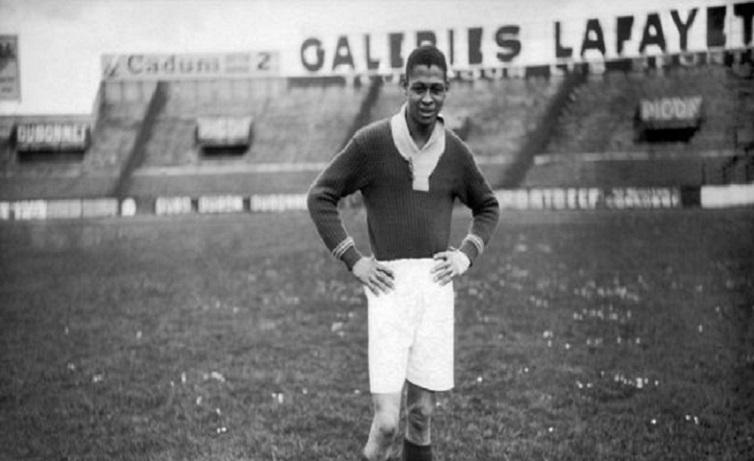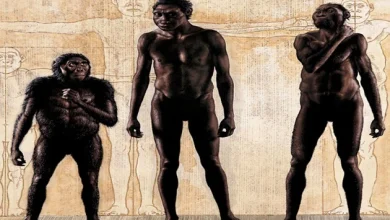The first African footballers in Europe

From Hussein Heggazi to Larbi Ben Mbarek, via Raoul Diagne and Ali Bennouna, the route of the first African footballers in Europe was not easy. Here is their story.
Football is the king sport in most countries of the world. No doubt, it is the most popular game on the planet. It is also the sport of the poor. Its practice does not require sophisticated infrastructures or hard-to-find means. All you need is a vacant lot in an African village or an abandoned alley in a favela in Brazil so that the poorest children are overjoyed with their passion.
Key dates
- 1860-1870 Introduction of football in the English colonies in Africa
- 1890-1910 Emergence of football in the French colonies in Africa
- 1921 Creation of the Egyptian Football Union (accession to FIFA in 1923)
- 1929 In Senegal, the Indigenous Sports Union (ICU) is the first team made up of Africans
- 1930 Raoul Diagne is the first “black player” to participate in the French championship
- 1932 Ali Benouna is the first Maghreb to play in the French league
- 1949 Mokhtar Ben Nacef is the first Tunisian professional player in the French league
- 1964 Ahmed Oudjani (RC Lens), is elected top scorer in the French league
- 1995 George Weah (PSG) is voted top scorer in the Champions League
Tapping into a modest plastic ball, often barefoot, all day forge legendary champions of the calibe of George Weah, Roger Mila, Ronaldinho, Maradona, or other Lakhdar Belloumi
Football has been good for generations of players from the African continent. It helped them to assert themselves and defend themselves against prejudices and other forms of abuse and injustice. On the football fields, the contribution of African players to the booming European football is undeniable.
The dribblers of independence of Algeria
We owe them the spectacular technique and the passion in the game. The Salah, Mane, Mahrez and other Benatia are the delight of their teams in the Champions League, the poshest of the world football competitions.
Few European national teams today do not benefit from the adoption and naturalization of players of African descent. France owes its first world cup in 1998 to the legendary magician Zinedine Zidane, Algerian of origin.
Eusébio, one of the best footballers in history is Angolan of origin. He wrote the most beautiful pages in the history of Portuguese football. The 2018 World Cup in Russia saw the emergence of superstars of African descent including Kylian Mbappe and Paul Pogba for France or Romelo Lukako and Marouane Fellaini for Belgium.
Germany, Sweden, Italy, England, Holland,
Everything started naturally in England, the birthplace of football. From the beginning of the 20th century, football took on an international dimension. The first African footballer to visit the stadiums in Europe was the Egyptian Hussein Hegazi. He played for Fulham on 11-11-1911 and at the same time scored his first goal against the Stock Port County team.
Hegazi, born in September 1891 to an aristocratic family in the Delta, came to London in 1910 to study engineering at Cambridge University. He first landed at Dulwich Hamlet FC, a lower division team, before catching the attention of recruiters from the top teams in the English league. The Egyptian striker caused a sensation as soon as he came to England and seduced everyone with his playfulness, speed and punch.
Hegazi opened the way to Europe for African footballers. At home, he is very aptly called the father of Egyptian football. A famous street in Cairo today bears his name.

North Africa en masse
Footballers from Algeria, Morocco and Tunisia had already crossed paths with those of metropolitan France since the beginning of the 19th century. A North African team had played twice on the other side of the Mediterranean and had twice beaten the French team in 1924 and 1925.
Through their exceptional talent and their impressive enthusiasm, the players from the colonies quickly seduced the emerging teams of the city. The first North African to join a football team in France was Algerian Ali Benouna. He signed with FC Sete in 1930, followed by his compatriot Abdelakader Ben Bouali. Born in Chlef in 1912, Benouna the excellent winger and dribbler of charm wins the Coupe de France with Sete in 1934. He then opted for Stade Rennais where he confirmed his talent. His excellent performance at the club level earned him two summonses in team France, colonizing country of Algeria at the time.
He was also the first Maghreb to wear the tricolour jersey. He plays the match lost by France 3- 0 against Czechoslovakia in February 1936 and wins a friendly against Belgium in March of the same year. He died in Algiers in November 1980.
The presence of North African players in the French league later becomes more ordinary. Their number reaches forty before the second world war.
The phenomenon Ben MBarek
After this first wave of North African players, France welcomes a true football legend, coming from the other side of the Mediterranean. The Moroccan Larbi Ben MBarek was noticed by the recruiters in his native country in 1937 during a France-Morocco match.
Olympique Marseille in search of the rare bird in the French colonies committed the following year. He joined Algerians Riahi Rabih and Abdelkader Ben Bouali, who already held the OM. It only took a few matches to make Casa’s terrible child a sensation all over France. The press nicknamed him immediately the black pearl because of the colour of his skin. But it was above all his enormous talent that made him talk. His extraordinary technique and exemplary efficiency dazzled the crowds.
He soon won a place in the French team that revives the victories on the great football nations with Ben Mbarek playmaker. Interrupted by the World War 1939-1945 Ben Mbarek’s career will continue after in Spain at Atletico Madrid then a return to Marseille. After a long career rich in titles and success in Europe, Ben Mbarek returns to the fold and ends his days in misery and total anonymity.
He defended the colours of the French team for 16 years from 1938 to 1954 but has never been naturalized as French. He died in oblivion in September 1992. His corpse was discovered only three days after his death.
A tragic end to a man whom some consider to be the best player in the history of football. King Pele himself had said: ‘If I am the king of football, Ben Mbarek is the God’.
The time of sub-Saharan Africa
Players in sub-Saharan Africa are slow to join the European Championships as they are rarely integrated into the local teams of their own, dominated by settlers.
The first African black selected in France team was Raoul Diagne born in Guyana of Senegalese father and French mother Paris. Diagne plays his first match with the Blues on January 25, 1931 against Italy.
It was only after the Second World War that sub-Saharan footballers became more numerous in France. The team of Saint-Etienne attaches the services of the Cameroonian Eugene N’Jo Léa. He led, with his fellow African Rachid Makhloufi Algeria, the St Etienne as champions of France in 1957.
In the 60s, the Beninese Lucien Cossou and the Martiniques Paul Chillan and Daniel Charles-Alfred are the black footballers most prominent in the hexagon.
They will be followed by Les Marius Trésor and Gérard Janvion, two key elements of the France team of the 70s. Malian Jean Tigana and Ivorian Basile Boli will then extend the list of black African footballers who made the heyday of the team of France.




